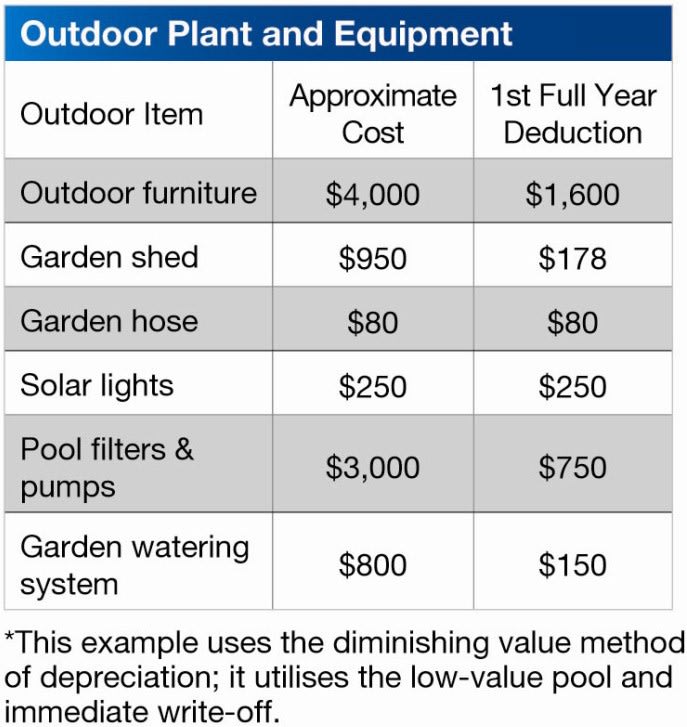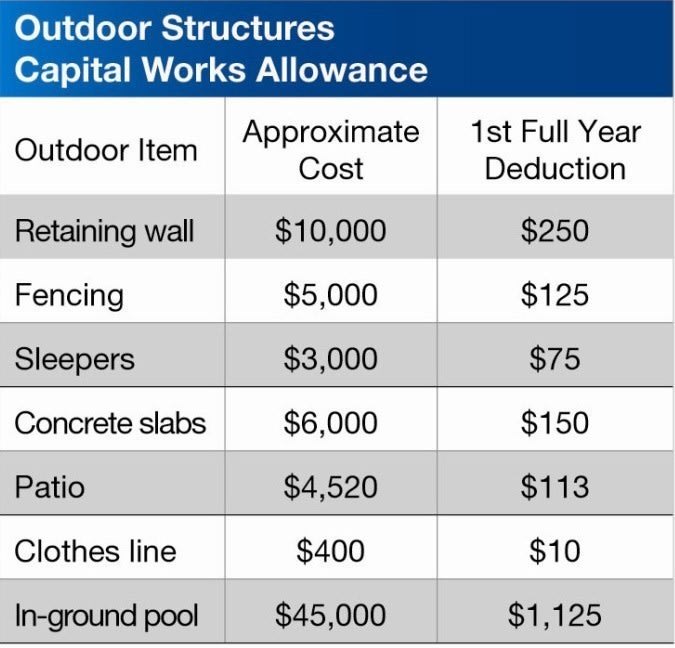Why outdoor appreciation increases depreciation

New investors can sometimes neglect the importance and value of getting a depreciation schedule for a property.
But the truth is, there are just so many reasons to get one for your investment property. Tax depreciation potential is so integral to my personal investment strategy that I even get depreciation schedule quotes on properties I haven’t even purchased yet.
I’m not an expert on depreciation myself; which is why I’m writing today about an area that is perhaps not as commonly considered when talking tax depreciation.
Most investors (myself included) tend to focus on units and apartments in their buying strategy. These property types are typically more accessible financially for first time investors and those on limited budgets. Plus, and as trends in recent years have uncovered, the stereotype that units do not acquire capital growth as fast as detached houses, has been (rightly) challenged and disproved in some instances.
Certainly from a depreciation perspective investors immediately think of the ‘indoor’ items that can be accounted for in a schedule (things like ovens, appliances, HVAC, and so on); however, and as I am discovering, there can be substantial depreciation benefits to outdoor areas too.
Depreciation can actually be claimed for outdoor structures, fixtures and fittings in investment properties.
Depreciation can actually be claimed for outdoor structures, fixtures and fittings in investment properties. In fact, items outside a building can actually add value to a property. Rather than ignoring the street appeal, investors can include items in the yard or outdoor area to help attract potential tenants. The investor can then maximise their deductions by claiming depreciation on the eligible items in the front yard, backyard and balconies of their properties.
Deductions can be claimed on these outdoor assets as either capital works allowance or plant and equipment depreciation.
Capital works allowance, also known as building write-off, is based on the historical cost of a structure, excluding the cost of plant and non-eligible items. Outdoor structures which qualify for the capital works allowance include:

Plant and equipment items, including removable or mechanical assets, are also eligible for depreciation deductions. Each plant and equipment item has an effective life set by the Australian Tax Office (ATO).
The depreciation available on each item is calculated using the effective life. Some depreciable outdoor plant and equipment items commonly found outside a property include:

Assets outside a property can be worth thousands of dollars. Investors should take special notice when old assets including retaining walls, garden sheds, and driveways are removed and replaced during a renovation. They may be entitled to claim 100% of the remaining depreciable value for these items as a deduction.
A specialist quantity surveyor is qualified to calculate values and construction costs of these items and can ensure that investors are not throwing dollars away. What is relatively a nominal cost to the investor for this quantity surveyor’s depreciation report can return thousands of dollars over the life of a depreciation schedule for that property. Food for thought indeed.